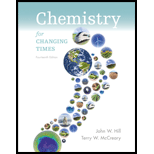
Concept explainers
Interpretation:
The number of protons in sodium atom using the periodic table should be determined.
Concept introduction:
Proton is a positively charged subatomic particle; the charge on the proton particle is +1e and its mass is slightly less than that of a neutron. The number of protons present in the nucleus is a defining property of the element and is referred to as an
Interpretation:
The number of protons in a sulfur atom using the periodic table should be determined.
Concept introduction:
Proton is a positively charged subatomic particle; the charge on the proton particle is +1e and its mass is slightly less than that of a neutron. The number of protons present in the nucleus is a defining property of the element and is referred to as atomic number. Each element has a unique atomic number owing to the unique number of protons.
Interpretation:
The number of protons in selenium atom using the periodic table should be determined.
Concept introduction:
Proton is a positively charged subatomic particle; the charge on the proton particle is +1e and its mass is slightly less than that of a neutron. The number of protons present in the nucleus is a defining property of the element and is referred to as an atomic number. Each element has a unique atomic number owing to the unique number of protons.
Interpretation:
The number of protons in a copper atom using the periodic table should be determined.
Concept introduction:
Proton is a positively charged subatomic particle; the charge on the proton particle is +1e and its mass is slightly less than that of a neutron. The number of protons present in the nucleus is a defining property of the element and is referred to as an atomic number. Each element has a unique atomic number owing to the unique number of protons.
Interpretation:
The number of protons in uranium atom using the periodic table should be determined.
Concept introduction:
Proton is a positively charged subatomic particle; the charge on the proton particle is +1e and its mass is slightly less than that of a neutron. The number of protons present in the nucleus is a defining property of the element and is referred to as an atomic number. Each element has a unique atomic number owing to the unique number of protons.
Want to see the full answer?
Check out a sample textbook solution
Chapter 3 Solutions
Chemistry For Changing Times (14th Edition)
 ChemistryChemistryISBN:9781305957404Author:Steven S. Zumdahl, Susan A. Zumdahl, Donald J. DeCostePublisher:Cengage Learning
ChemistryChemistryISBN:9781305957404Author:Steven S. Zumdahl, Susan A. Zumdahl, Donald J. DeCostePublisher:Cengage Learning ChemistryChemistryISBN:9781259911156Author:Raymond Chang Dr., Jason Overby ProfessorPublisher:McGraw-Hill Education
ChemistryChemistryISBN:9781259911156Author:Raymond Chang Dr., Jason Overby ProfessorPublisher:McGraw-Hill Education Principles of Instrumental AnalysisChemistryISBN:9781305577213Author:Douglas A. Skoog, F. James Holler, Stanley R. CrouchPublisher:Cengage Learning
Principles of Instrumental AnalysisChemistryISBN:9781305577213Author:Douglas A. Skoog, F. James Holler, Stanley R. CrouchPublisher:Cengage Learning Organic ChemistryChemistryISBN:9780078021558Author:Janice Gorzynski Smith Dr.Publisher:McGraw-Hill Education
Organic ChemistryChemistryISBN:9780078021558Author:Janice Gorzynski Smith Dr.Publisher:McGraw-Hill Education Chemistry: Principles and ReactionsChemistryISBN:9781305079373Author:William L. Masterton, Cecile N. HurleyPublisher:Cengage Learning
Chemistry: Principles and ReactionsChemistryISBN:9781305079373Author:William L. Masterton, Cecile N. HurleyPublisher:Cengage Learning Elementary Principles of Chemical Processes, Bind...ChemistryISBN:9781118431221Author:Richard M. Felder, Ronald W. Rousseau, Lisa G. BullardPublisher:WILEY
Elementary Principles of Chemical Processes, Bind...ChemistryISBN:9781118431221Author:Richard M. Felder, Ronald W. Rousseau, Lisa G. BullardPublisher:WILEY





